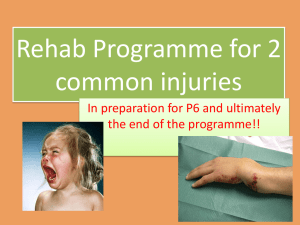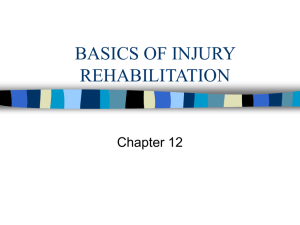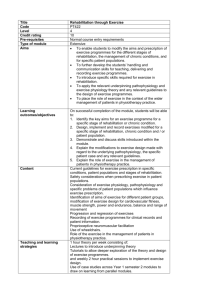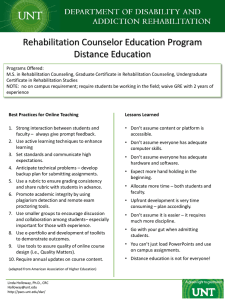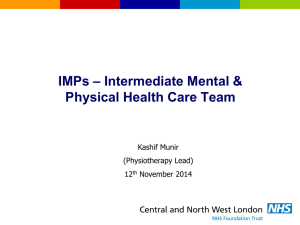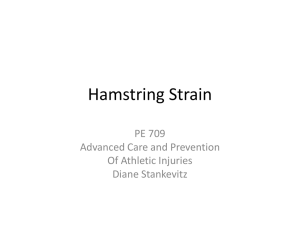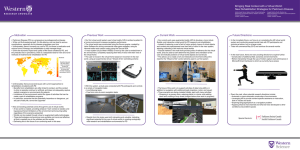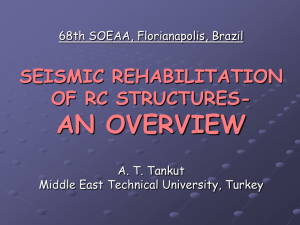Rehab Programme for 2 common injuries
advertisement
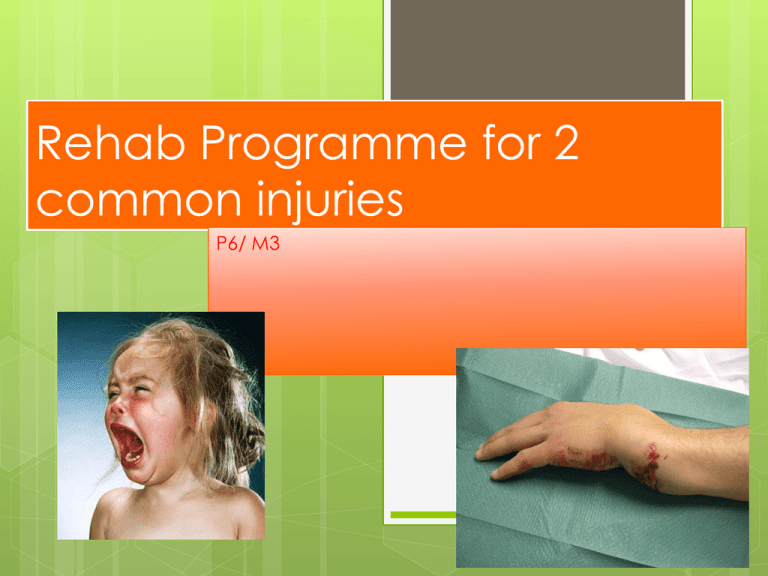
Rehab Programme for 2 common injuries P6/ M3 Further Info… Create a rehab programme for both injuries. Your plan must include: • Signs & Symptoms of the injury • First Aid Treatment for the injury • The stages of Rehab • Methods to Improve Range of Motion • Methods to Improve Strength • Psychological Considerations • Your own medical form o Consent and personal details (medical history, allergies) o Tracking progress (i.e. SMART goals, review dates) Injury Rehabilitation Phases of an Injury The stages that follow an injury can be classified into 5 phases: Stage Timescale Name Phase 1 0-20 minutes Immediate Post-Injury Phase 2 0-72 hours Acute Phase Phase 3 3-10 days Sub-Acute Phase Phase 4 Dependent on severity of injury Active Rehabilitation Phase Phase 5 Dependent on severity of injury Functional / Sports Specific Rehabilitation Phase 1 – Immediate Post-Injury Aims of the treatment during Phase 1 are to: Assess the injury Prevention of initial swelling Protect the injured part from further damage Treatment should involve S.A.L.T.A.P.S. (we looked at this in Topic 3) Phase 2 – Acute Phase Aims of the treatment during Phase 2 are to: Control bleeding & swelling Reduce pain Protect from further damage Apply modifications if required (e.g. Crutches if non-weight bearing needed) Offer advice Treatment should involve P.R.I.C.E. (We looked at this in Topic 3) Phase 3 – Sub-Acute Phase Aims of the treatment during Phase 3 are to: Absorb swelling & products from inflammation (e.g. dead cells) Hot & cold therapy Massage Elevation Promote healing & assist growth of new cells Hot & cold therapy Protect from further injury Use of bandages, crutches etc Develop scar tissue Soft tissue stretching Massage Introduce non-weight bearing mobilisation exercises Range of motion exercises Introduce non-weight bearing strengthening exercises Strengthening exercises Phase 4 – Active Rehabilitation Aims of the treatment during Phase 4 are to: Remobilise the joint & increase the range of motion Range of motion exercises Re-strengthen the muscles acting on the joints Strengthening exercises Increase the extensibility of scar tissue Stretching Massage Protect form further damage or stress Bandages / strapping Walking aids (crutches) Partial weight bearing Maintain endurance & fitness of the Modernise exercise programme to rest of the body include alternative exercise e.g. Swimming, static bike, isokinetic arm cycler Phase 5 – Functional / Sports Specific Rehabilitation Aims of the treatment during Phase 5 are to: Improve balance & co-ordination Return to pre-injury strength & power Functional Rehab will include sports specific movements, techniques & skills. It would start very basic & progress to very intense ultimately replicating a training or game situation. This may start with straight line activities & progress to side-to-side & rotational movements. You would then progress onto jumping & landing. Provide psychological reassurance Psychological skills training Restore sport specific skills & movement patterns Select 2 specific sports injuries and plan safe and appropriate treatment and rehabilitation programmes accordingly, with tutor support. The injuries selected should be done so with care, as appropriate selection will provide scope for learners to cover the range of criteria P6, M3 and D2. (E.g., a fracture to the tibia and fibula has more scope than a bruise…) • It should clearly state the treatment and rehabilitation, methods to improve: the lost range of motion, strengthening and coordination exercises, psychological considerations, the need for a carefully structured approach to rehabilitation and relevant documentation and tracking of the treatment and rehabilitation programme. Treatment: Based on accurate diagnosis, eg immediate and long term, use of specialist help and advice Rehabilitation: Identification of stages of rehabilitation, eg stages 1-5, acute stage to re-establishing functional activity, strengthening exercises, on-going treatments, gradual increase in activity Programme: Methods to improve the lost range of motion, psychological considerations, various goals, tracking of treatment- all within the programme
